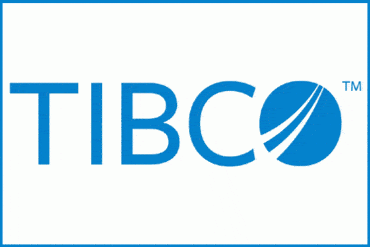
To extract full value from amassed data, organizations need to cultivate and empower a data-driven company culture that starts with a commitment from the C-suite and seeks to empower every employee with accessible data access.
Leading businesses have long known that data is much like oil – an extremely valuable strategic resource that must be tapped and refined in order to unlock its utility. Yet, for all their good intentions, far too many organizations focus efforts on the accumulation of data rather than the refinement and application of data that generates real value. Unkempt information or siloed data that is not easily accessible across business systems or is shared only with a few stakeholders – these are the kinds of corporate habits that exacerbate the problem. At issue? Data acquisition is far easier than conversion of that data via analytics into usable insights. And transforming a business culture to be data-led is challenging and sometimes risky work.
While many have embraced some version of a self-service data analytics model, most companies still struggle to capture the high potential impact of the data they have at their disposal. In a recent Harvard Business Review (HBR) survey, the vast majority of participants (89%) stated that analyzed data is imperative to their organization’s innovation strategy. And while respondents acknowledge that data analytics is successfully enhancing the customer experience and improving operational efficiency, they struggle to apply those data insights to drive innovation and uncover new business opportunities. The painful truth is that many organizations are falling short when it comes to realizing the innate potential offered by data and analytics…keeping data processes and policies unchanged, getting the same incremental results. Those who think differently can create a competitive advantage, tapping into a healthier data culture and adding even greater long-term competitive value to the power of analytics.
What is standing in the way?
According to the HBR survey, the major barriers to improved use of analyzed data are insufficient employee skills or training and poor data quality. At the root of both issues lies the inherent difficulty of training a varied employee workforce in specialized, dedicated BI technology and the impossible leadership challenge of asking every employee to play statistician, data scientist, and business strategist in order to become ‘data-driven. Neither task is necessary or achievable, yet organizations try (and fail!) to accomplish both with existing BI tooling.
To become a ubiquitous part of data-informed decision-making, analytics must drive actions in the same manner as our phones, smart watches, and other convenient applications, delivering relevant, up-to-date insights where needed and with context. Effective applications of data alert us to emerging situations and provide insights at the decision point, enabling every employee to use data in their decision-making without specialized BI and statistical training.
When intelligence is infused with workflows, processes, and applications, multiple steps can be automated to create a frictionless experience for the user without complicated tools or technical training. Instead of requiring employees to leave their workflows, analytic infusion makes data and actionable intelligence available when and where it is needed. Many executives take a conservative stance towards democratizing data because of the perceived risk of sharing data widely, worrying that the right policies, ethics, and governance may not be in place. But in a healthy data culture, leaders are receptive to doing what it takes to make data useful – because the tremendous positive business outcomes of a data-informed organization are imperative, and careful planning counterbalances the risk of enhanced access to data.
Technology itself – often touted as an enabler – can also present roadblocks in terms of data utilization, especially when it limits who can see what and when. Add to this the rapid accumulation of more and more data, and the navigation challenges can quickly amplify. Too much of anything can be overwhelming, data included. And while data scientists can surely make sense of data, they are often detached from big picture business needs. A better approach determines via consensus what is most important, establishing company priorities regarding how data should be leveraged, and selecting technology that specifically drives better adoption of data practices. Every facet of the business has a role to play and a stake in the company’s data strategy.
In this landscape, employee perspective is invaluable, serving not only the group to which they report but the company as a whole. Rather than asking an employee to step out of their workflow pace and comfort zone to obtain analyzed data (requiring time, energy, and training), it is far better to embed analytics within the user’s routinely-used applications, putting the information where needed and allowing timely actions from within that same application. This tack boosts analytics adoption by both data experts and operational workers, anyone who needs insights in context of their role. This lays a strategic foundation for improving outcomes, efficiency, and alignment across business units, departments, and the entire enterprise, including its supply chain and partners.
A top-down approach
Eliminating data gatekeepers, especially those ingrained in company culture, requires a deep commitment from the top but making the data available is only one hurdle. A lack of skills and training can be an obstacle for executives as much as it is for the rest of the organization. With the exception of the chief data officer, corporate leadership often thinks of the application of data and analytics as a specialist role, but a familiarity with what is possible, the techniques and approaches to create insights from data, enables leaders to adopt data-informed strategies and drive the emergence of data-driven cultures. A working knowledge of the insights needed, an understanding of the value of clean data, and an ability to identify gaps in the data ecosystem enable leaders to re-engineer how decisions are made operationally – not only with employees but also with suppliers, partners, and customers. It is this awareness that is so invaluable to building a scalable data analytics culture, truly and fearlessly leveraging data to fuel business value.
It’s also crucial to create a realistic, incremental strategy for infusing analytics into company operations and processes. For example, pinpoint an area where analytics can deliver quick, tangible business results. Let the data help predict customer activity to save time and increase revenue. And remember that metrics are not one size fits all. Get stakeholders together and set goals to measure how well the collective team achieves them and whether deadlines were met. Achievements may not always be about revenue and instead may facilitate better customer insights or spotlight the need for new products or services.
Culture, people, and analytics
Data analytics don’t deliver benefits unless people are empowered to use them. In a data-driven culture, everyone in the organization has seamless access within their own workflows to the data analytics necessary to do their jobs. No more bouncing between where the data exists and where the work is performed – infused analytics enables insights and decision making in tandem and in real time.
To extract full value from amassed data, organizations need to cultivate and empower a data-driven company culture that starts with a commitment from the C-suite and seeks to empower every employee with accessible data access. Executives must first tackle their own data culture, thinking differently about data literacy and decision making at every level, then apply that literacy to infusing insights into the daily work of every employee.By building, embracing, and promoting a true data culture, leaders can tap into more efficient processes and new business opportunities. Technology matters, but machines and data don’t work in a vacuum – the winning formula enables culture and people, collaborating and supported by smarter processes with analytics infused throughout.






























